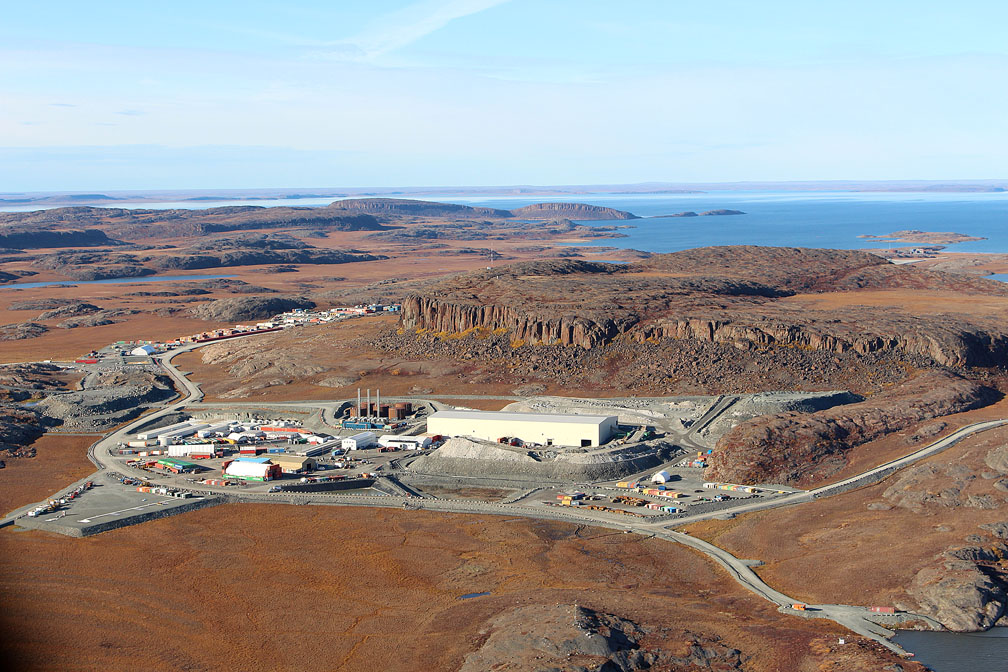COVID-19 cases at Nunavut’s Hope Bay mine cast shadow on proposed sale to Shandong Gold
New coronavirus cases have scuttled plans for a joint site visit.

Travel in and out of the Hope Bay gold mine in western Nunavut has halted, following cases of COVID-19, seven presumptive and two positive, at the site, says Jason Neal, president and CEO of TMAC Resources Inc.
In addition to halting worker changeovers, the freeze on travel to the site has prevented a visit by executives from TMAC and Shandong Gold Mining Co. Ltd., which is seeking to buy TMAC and its Hope Bay mine.
That visit’s been held up as the Government of Nunavut evaluates the situation, Neal said.
“If the GN says that they do not see it’s safe to operate the mine, we would go into care and maintenance,” Neal said. “We hope it’s not the case.”
Meanwhile, the federal government is still reviewing the proposed sale, which was first pitched in May and approved by TMAC shareholders in June.
The federal decision, which may not come until February 2021, is the final step in advancing the deal between the Chinese-state owned mining company and TMAC.
But if SD Gold can’t visit the Hope Bay site, they could back away from the deal, Neal said.
“I do not have a concern about the access to site being the reason that the deal does not get done,” he said. “We are working very hard to get the government approval.”
Last week, representatives from the two mining companies, Alex Buchan, TMAC’s vice-president for sustainability, and Mark Wall, the new CEO of Streamers Gold Mining Co. Ltd., spoke to Nunatsiaq News about their plans for the proposed sale to allay any fears about the deal.
Streamers is SD Gold’s wholly owned Canadian subsidiary, created for its proposed acquisition of TMAC.
“A common reaction for people hearing about this transaction is initially some concern. Change is often something that people worry about,” Buchan said.
The Kitikmeot Inuit Association, which represents five communities in western Nunavut and is a TMAC shareholder, abstained from voting on the proposed sale in June due to uncertainty about how the sale would affect Inuit.
But Buchan said “the risk to this transaction that we perceive for Nunavut and our stakeholders is the economic impact if the deal does not go through.”
This includes millions of dollars in royalties, contracts and jobs, which are expected increase under SD Gold.
“That’s what is on the line here,” Buchan said.
Some observers have suggested that SD Gold’s move to buy a mine near the Northwest Passage is a sign of China’s ambition to become a “near-Arctic state.”
But when asked why SD Gold wants TMAC, Wall said SD Gold “is a very, very good company at buying complex underground mines.”
While most of its gold mining and exploration activity are domestic, two years ago SD Gold bought Barrick Gold’s Veladero mine in Argentina for $960 million.
“Their bread and butter is complex underground mines,” Wall said.
Streamers, which will be Canadian-run, won’t change Hope Bay’s workforce and will only aim to improve the mine’s performance, Wall said.
In 2013, TMAC bought the Hope Bay complex from the United States–based Newmont Mining Corp. under a complicated share-offering arrangement.
In 2017, TMAC began producing gold from Doris North, its first mine at Hope Bay, but TMAC then experienced disappointing production results, resulting from challenges due to processing and other mechanical issues.
The junior mining company found it didn’t have enough money to develop and expand its operations, and in 2019 TMAC started to look for other options, such a merger, a joint venture or alternative forms of long-term financing.
“Although we had permitted our phase two of operations to Madrid and Boston, we recognized that we did not have the resources to expand and develop Hope Bay,” Buchan said.
“So we were reaching out to the marketplace to see if there were mergers or opportunities to work with other companies, and we wanted to do this on our own terms so we wouldn’t wait for market forces to influence our company.”
Buchan said TMAC was in communication with several companies.
“We had our own criteria for the company. Shandong met all of those criteria—they have the financial and technical capacity to work in a complex greenstone belt,” Buchan said.
If the transaction moves ahead, it will take a lot of money to revitalize Hope Bay — more than $1 billion.
“Shandong is aware of the significant capitalization required,” Wall said.
SD Gold has committed to pay $149 million for TMAC. Earlier this year, SD Gold also made an equity investment of about $15 million to support the cost of TMAC’s 2020 sealift.
Hope Bay is now operating on a limited basis, with the processing plant dealing with material from stockpiles, as part of the company’s response to the COVID-19 pandemic.
Under the Investment Canada Act, the government continues to look at whether the deal with SD Gold is likely to increase employment in Canada, as well as its economic and other impacts.
The Investment Canada Act also allows Ottawa to review a transaction for national security reasons.
Navdeep Bains, Canada’s minister of innovation, science and industry, has extended the timeline to determine whether to start a national security review until Oct. 19.
The final decision on the proposed sale is expected by Feb. 8, 2021.
A similar review took place in 2007 when Miramar Mining Corp., then the owner of Hope Bay, sold the property to Newmont for $1.5 billion.